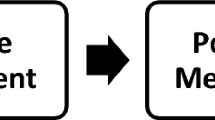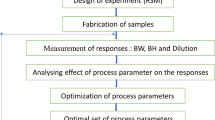Abstract
In progressive dies, two or more stations are used to produce sheet metal components. In each station, one or more processes are applied. The progressive dies reduce the time and cost of producing complex sheet metal components. However, the design and manufacture of these dies are difficult. CAD/CAM systems have been proved to be very useful tools for this task. The main problem of CAD/CAM systems used in progressive die design is determining the bending operations sequence. In this paper, a new method for determining the sequence of the bending operations is described. In this method, sequencing is done in two stages. First, the bending operations, which can be carried out simultaneously, are defined by a classification method. In this method, all the bends are initially divided according to their bending directions (feed direction or perpendicular to it). Then for each direction, the bends are divided into operation groups according to classification rules. Three rules are used to determine the bending operation groups in this paper. These rules are based on relations between the bends in the component. The sequence of the bending operation groups is then determined using fuzzy set theory. Four components taken from industry and previous papers are used to show the capabilities of the proposed method.
Similar content being viewed by others
References
Boljanovic V (2003) Sheet metal forming processes and die design. Industrial, New York
Cheok BT, Nee AYC (1998) Trends and developments in the automation of design and manufacture of tools for metal stampings. J Mater Process Technol 75:240–252
Abedini V, Farsi MA, Arezoo B (2007) Computer aided determination of bending sequence in progressive dies using fuzzy set theory. In Proceedings of the TICME2007, Tehran
de Vin LJ, Streppel AH, Kals HJJ (1996) The accuracy aspect in set-up determination for sheet bending. Int J Adv Manuf Technol 11:179–185
Ong SK, De Vin LJ, Nee AYC, Kals HJJ (1997) Fuzzy set theory to bend sequencing for sheet metal bending. J Mater Process Technol 69:29–36
Gupta SK, Bourne DA, Kim KH, Krishnan SS (1998) Automated process planning for sheet metal bending operation. J Manuf Syst 17(5):338–360
Duflou JR, Van Oudheusden D, Kruth JP, Cattysse D (1999) Methods for the sequencing of sheet metal bending operations. Int J Prod Res 37(14):3185–3202
De Vin LJ, Streppel AH (1998) Tolerance reasoning and set-up planning for brake forming. Int J Adv Manuf Technol 14:336–342
Aomura S, Koguchi A (2002) Optimized bending sequences of sheet metal bending by robot. Robot Comput-Integr Manuf 18(1):29–39
Duflou JR, Nguyen THM, Kruth JP, Cattrysse D (2005) Automated tool selection for computer-aided process planning in sheet metal bending. CIRP Ann Manuf Technol 54(1):451–454
Li JY, Nee AYC, Cheock BT (2002) Integrated feature-based modelling and process planning of bending operations in progressive die design. Int J Adv Manuf Technol 20:883–895
Choi JC, Kim BM, Kim C (1999) An automated progressive process planning and die design and working system for blanking or piercing and bending of a sheet metal product. Int J Adv Manuf Tech 15:485–497
Kim C, Park YS, Kim JH, Choi JC (2002) A study on the development of CAPP system for electric product with bending and piercing operations. J Mater Processing Technol 130–131:626–631
Kim JH, Kim C, Chang YC (2006) Development of a process sequence determination technique by fuzzy set theory for an electric product with piercing and bending operation. Int J Adv Manuf Technol 31:450–464
The authors experience and observations in “progressive dies for Iran Khodro Automotive Company.” Tehran, Iran.
Author information
Authors and Affiliations
Corresponding author
Rights and permissions
About this article
Cite this article
Farsi, M.A., Arezoo, B. Development of a new method to determine bending sequence in progressive dies. Int J Adv Manuf Technol 43, 52–60 (2009). https://doi.org/10.1007/s00170-008-1680-5
Received:
Accepted:
Published:
Issue Date:
DOI: https://doi.org/10.1007/s00170-008-1680-5




